Course Main course Place of origin United Kingdom | Main ingredients Bread Main ingredient Bread | |
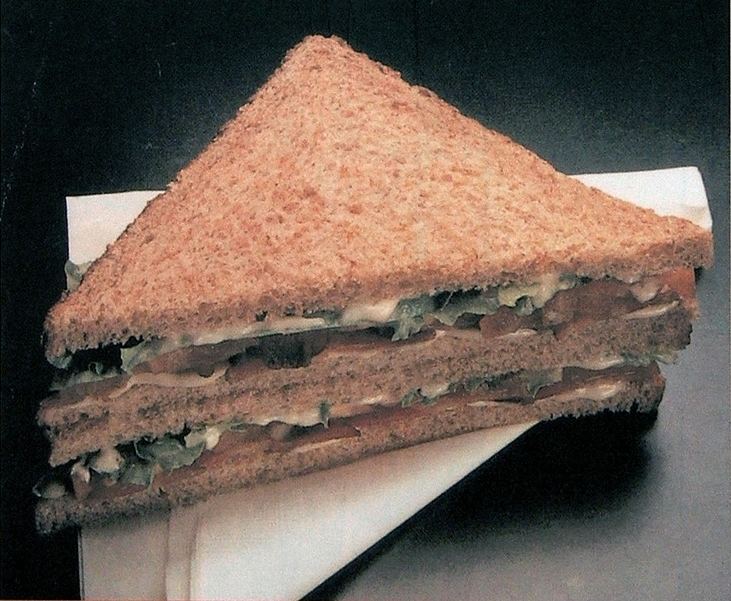 | ||
Similar Bread, Rustlers, Cheese and pickle sandwich, Corned beef sandwich, Ham sandwich | ||
In British humour, the phrase British Rail sandwich refers to sandwiches sold for consumption on passenger trains of the former British Rail (BR). Its use principally arose in British popular culture through comedic references to the food item as emblematic of the unappetising fare available aboard Great Britain's railway service during the period of nationalisation from 1948 to 1994.
Contents
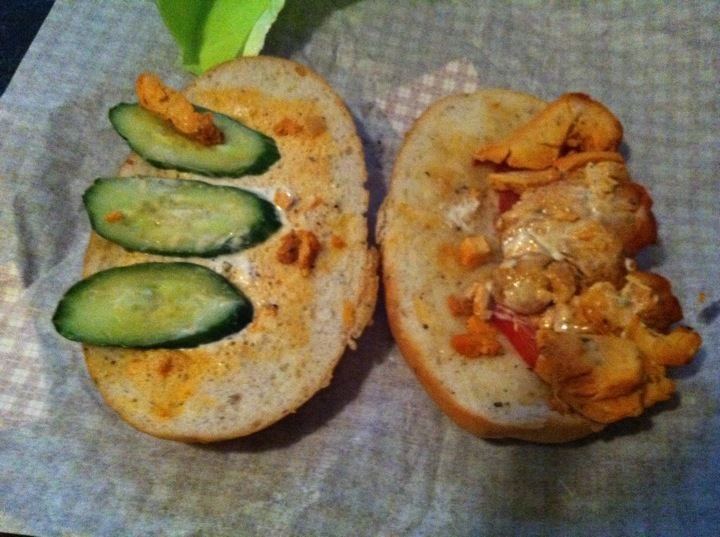
According to former BR caterer Myrna Tuddenham, the poor reputation of BR sandwiches likely owed to the practice of keeping the sandwiches "under glass domes on the counters in refreshment rooms until the corners turned up". Despite the many jokes at its expense, British Rail documents show that in 1993, its last full year as a public company, eight million sandwiches were sold. Historian Keith Lovegrove wrote that it was "a sandwich of contradictions; it could be cold and soggy, or stale and hard, and the corners of the isosceles triangle-shaped bread would often curl up like the pages of a well-thumbed paperback".
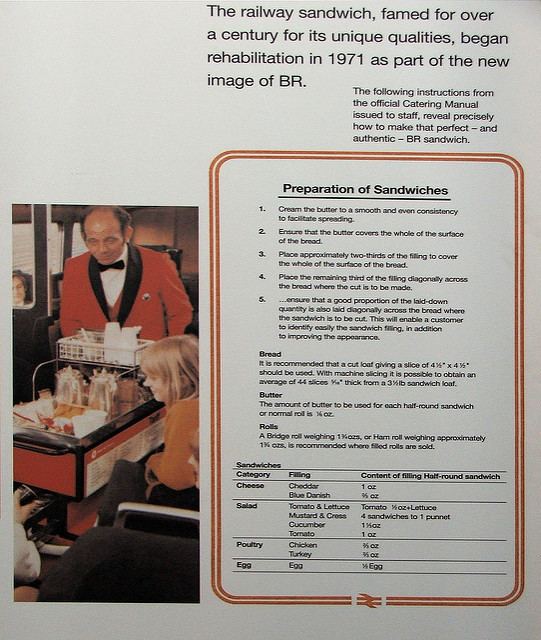
Sandwich recipe

In 2001, the National Railway Museum in York discovered a November 1971 document featuring sandwich recipes, issued by Director of Rail Catering Bill Currie. The document states its aim to make BR meals "the best on the track" and describes the precise amount of sandwich filling to be placed on the sandwich. The recipe also specifies, in order to make the sandwiches attractive – and to be able to tell what was inside – at least a third of the filling be placed in the centre, so that when cut diagonally, the customer would see the contents. For luncheon meat and sardines, the filling should total two-thirds of an ounce of meat. On an egg and cress sandwich, each sandwich was to contain one-twelfth of a punnet of cress. The document was featured in a 2002 exhibition of the National Railway Museum, "British Rail – A Moving Story". A typical ham sandwich would contain one slice of ham with another slice folded in half and placed diagonally over the first one. When the sandwich was cut diagonally it would make it appear that it contained three slices of ham when in reality it only contained two.
In other countries
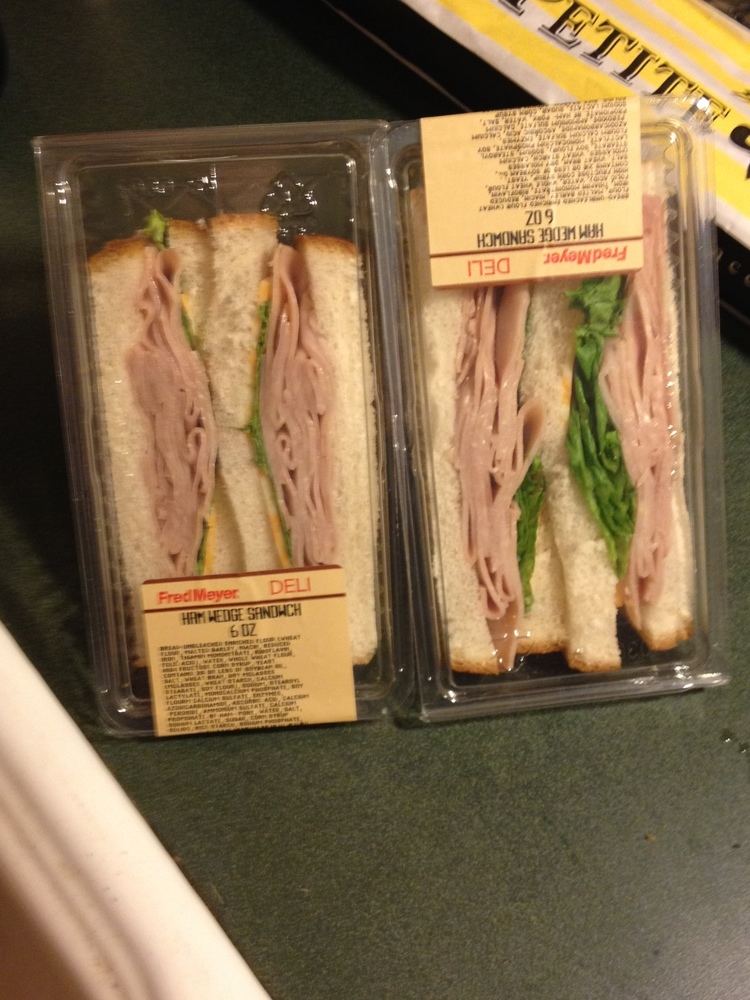
In France, this kind of unappetising sandwich is named "sandwich SNCF" or "sandwich TGV", by assimilation with the quality of sandwiches sold in French trains, especially high-speed trains. In popular humour, this name refers to any bad, meagre and expensive ready-to-eat food. Since 1 March 2009, sandwiches sold onboard TGVs have become cheaper.
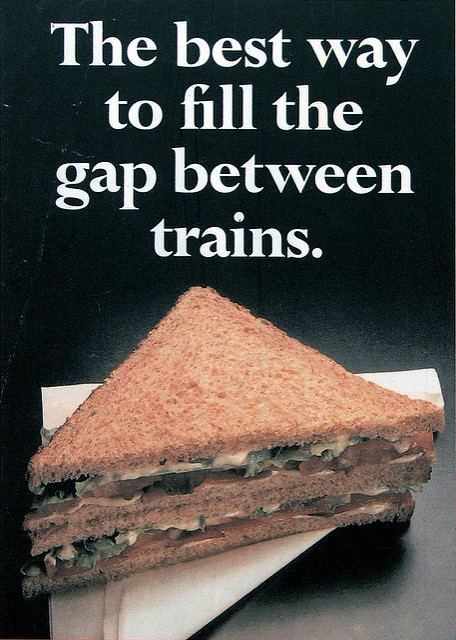
In Greece this kind of sandwiches are called "Καραβίσια" (karavisia) which translates roughly to "something that is on a ship", and means terrible sandwiches and very expensive like they are sold on passenger ships.
